MXA INTERVIEW: THE SHORT, BUT SWEET CAREER OF RICK JOHNSON
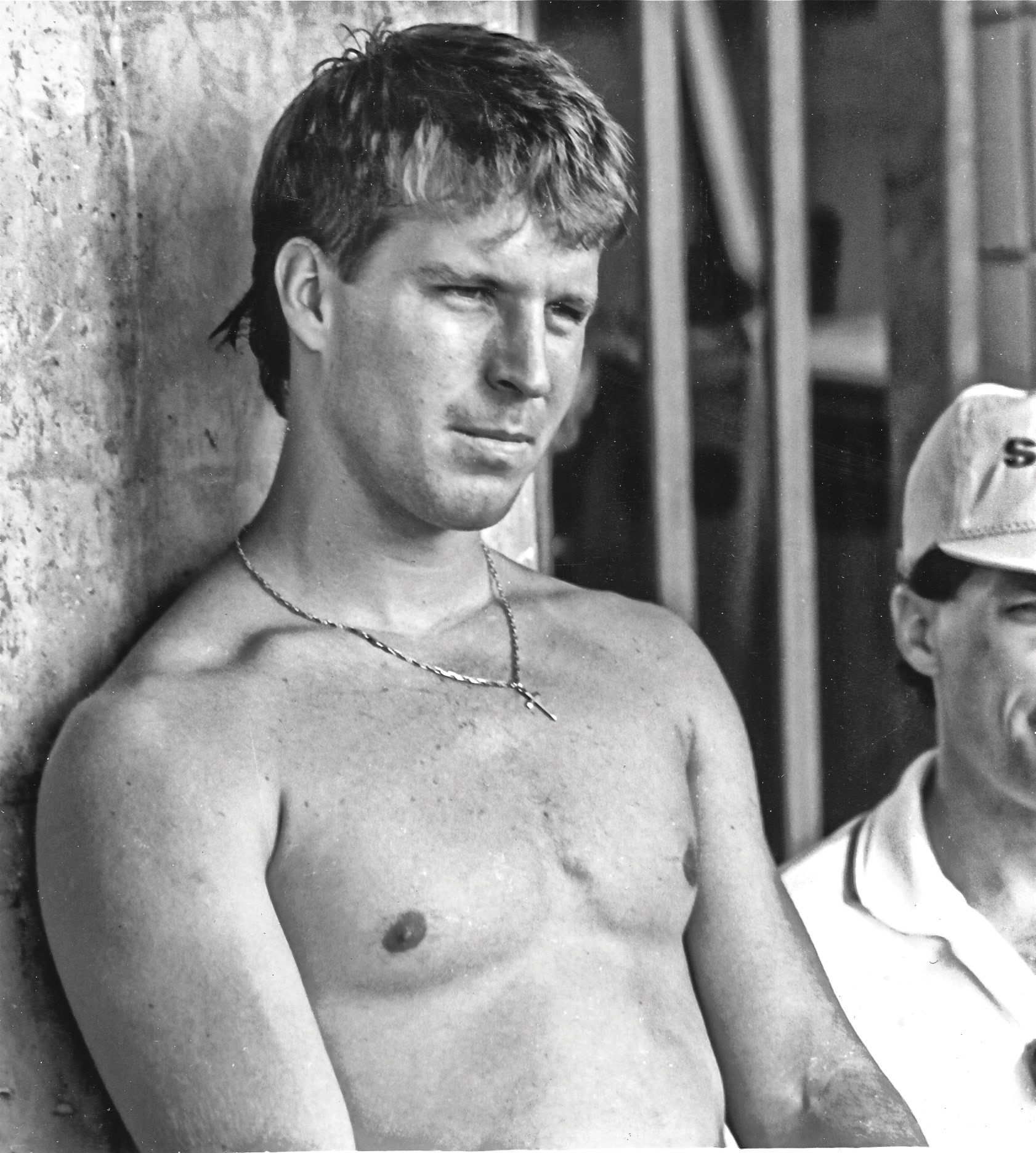
BY JIM KIMBALL
SAN DIEGO WAS A HOTBED OF MOTOCROSS, WASN’T IT? Yes, San Diego was a hotbed for motocross. You had lots of dealerships all within one block of each other on El Cajon Boulevard. There was a lot of racing in the area. Along with all the racetracks, there were many places to ride. I grew up after the movie “On Any Sunday” came out. You could go to a local practice track and see two or three factory riders there, so there was always somebody to challenge yourself against.
WHAT HELPED YOU PROGRESS SO QUICKLY IN THE SPORT? I was surrounded by older, faster guys. Murray Hoffman was a flat-track racer and a motocross racer. He was my first mentor. That was when the Honda XR75s first came out. He would come over and hang out with my dad and then race with me around our house. We had an acre lot with a little track around it.
I had the ability to come home from school, throw my boots and gloves on, and go riding until dark every day. When I was 10 years old, I was racing on Wednesday nights and on Saturday and Sunday. Once I turned 12, I got on a 125, and within three months I went from junior to pro. I was always racing against full-grown men. I was never afraid of them on the track. That is what helped me. I always had competition.
WHO ELSE WAS HELPFUL IN YOUR EARLY MOTOCROSS DAYS? Broc Glover helped me a lot. He was like a big brother to me. We met at local races, and after he got his factory Yamaha ride, he would let me ride one of his bikes and take me riding, as I was not old enough to drive. I watched how hard he worked, and that was my benchmark.
YOU MENTIONED TURNING PRO. WHEN DID THAT HAPPEN? I turned pro at the age of 13 in Southern California. I could not race the AMA National series until I was 16. Right after my 16th birthday, I got my Pro License and won every regional up in Washington and Oregon. Then, I signed up for the 1980 San Diego Supercross, but I didn’t qualify. I began 1981 as a rookie.
WERE YOU GETTING MUCH HELP AT THAT POINT? Yes. I was getting some support from Yamaha. I was getting three or four bikes a year, plus around $30,000 in parts. I had a JT clothing sponsorship, so I got free gear and some free tires from IRC. I just chased contingency money.
LET’S HEAR ABOUT YOUR PROGRESSION AT YAMAHA. In 1981 I got AMA “Rookie of the Year” and was the top 125 privateer. Then, in 1982, I moved to the 250 class as a factory rider on a production bike. I did a couple of Supercross rounds, but I focused on outdoor Nationals and got second in the 250 Championship.
In 1983, Yamaha put me on a full-factory works bike that I did not really like, and I got hurt quite a bit. I had a broken collarbone in Anaheim and then a dislocated hip in St. Louis. It was a rough year. I came back and won the Washougal National, and that was the highlight of my year.
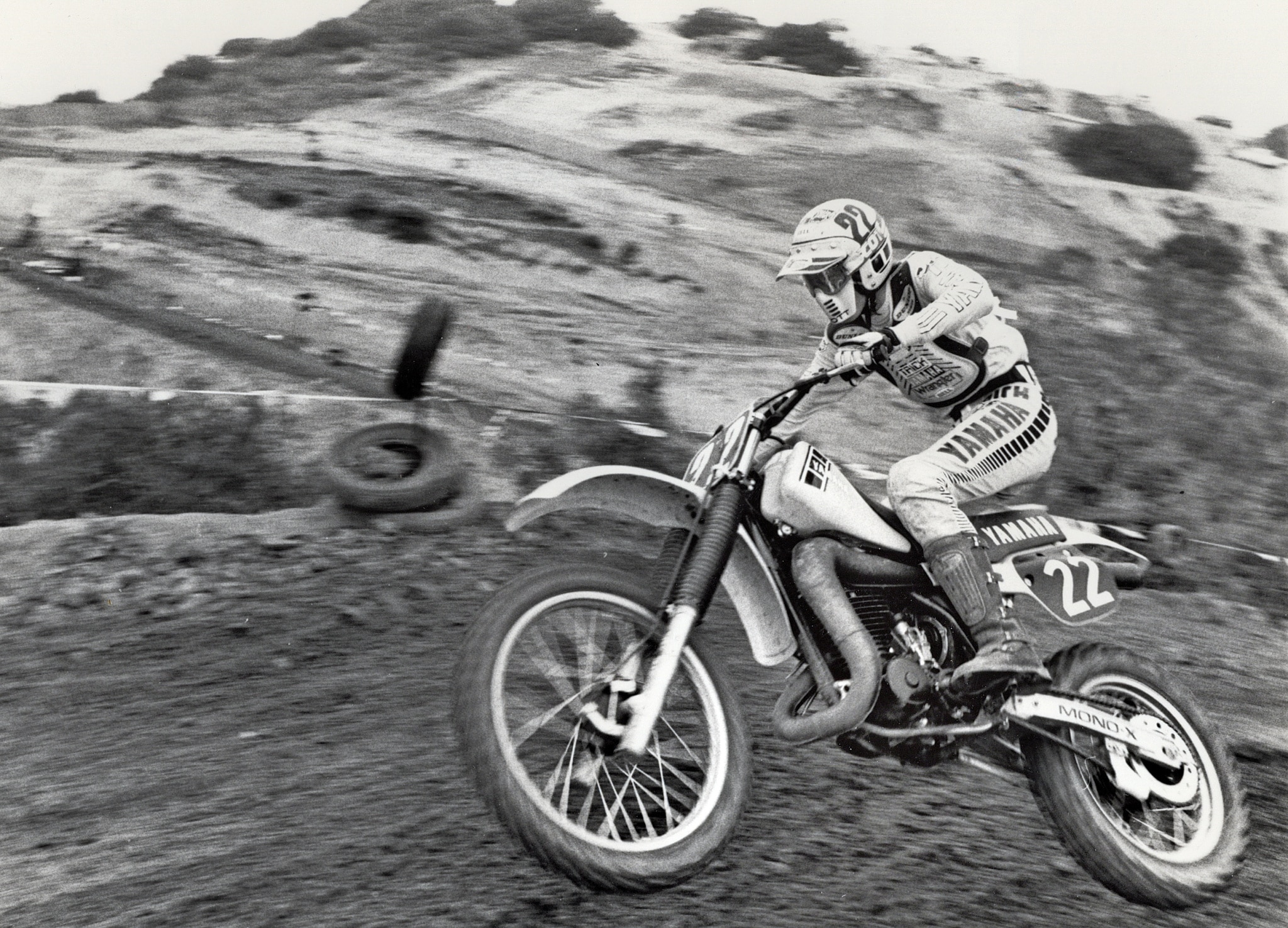
YOU ONLY RACED THE 125 CLASS FOR ONE YEAR? Yes, just one year. I started growing. I was probably 165 pounds when I turned 17 and was big on a 125. I liked the 125, but I always liked to ride with full power, so I said that I would rather race the 250 class.
HOW WAS YOUR FIRST 250 RACE? I won the first National at Hangtown. I was doing well all year long until I had a DNF and lost a bunch of points. Later, I broke my wheel and lost a bunch more points. Donnie Hansen won the 1982 AMA 250 National Championship over me by 3 points.
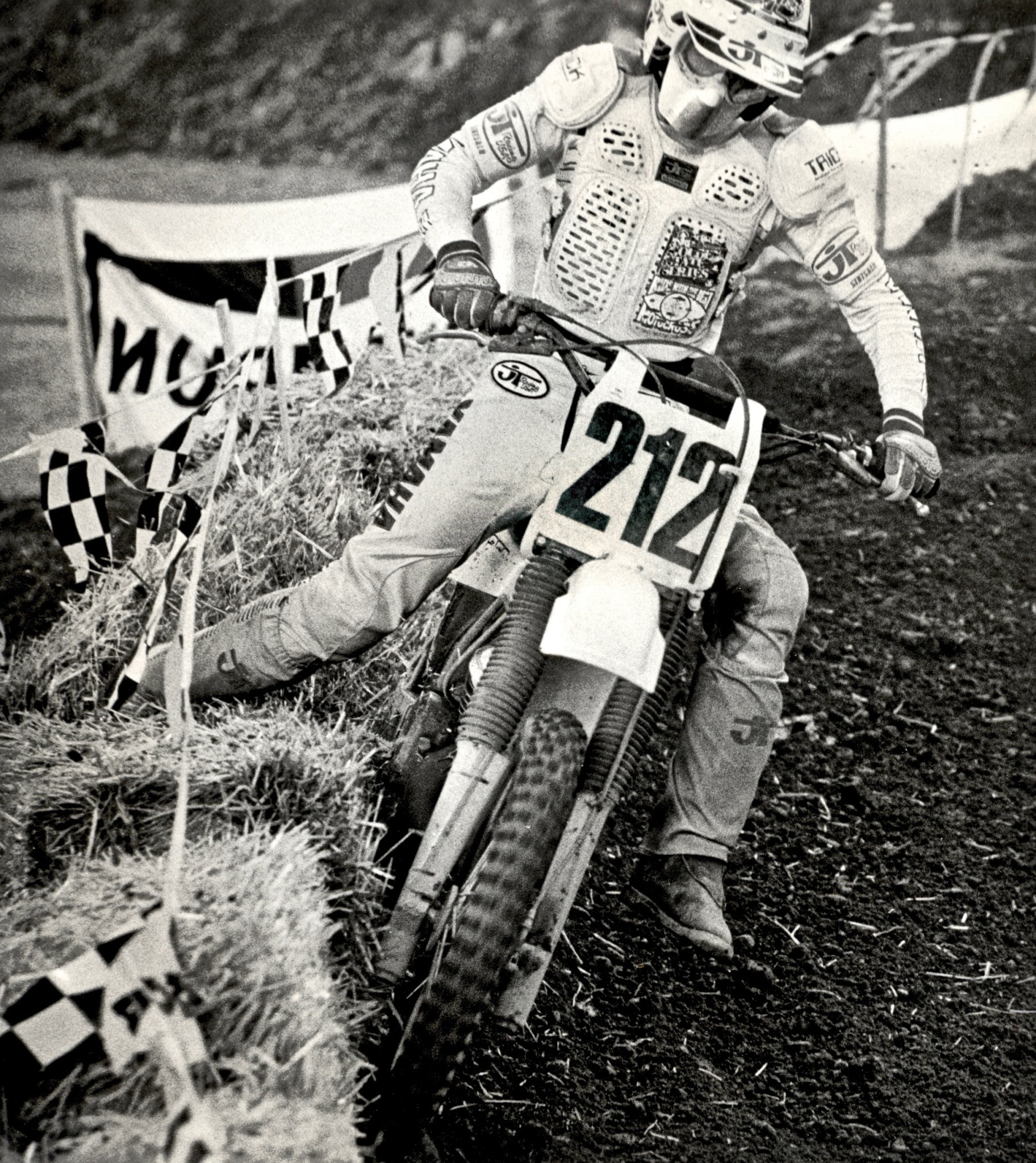
BUT, YOU WON THE 250 NATIONAL CHAMPIONSHIP IN 1984. At the end of 1983, the Yamaha team manager called Broc Glover and me into his office and said, “We have major budget cuts, so we have two choices. One, we go to production motorcycles, or two, we buy out your contracts and let you ride for somebody else.”
At that time, Honda had these incredible works motorcycles. So, Broc and I were both praying that they would buy us out of our contracts, because that would have given us a chance to find a better ride. But, Yamaha decided to go with the production bikes. I won the 1984 Championship, but it was difficult. We had zero works parts. It was 100 percent a production bike.
WAS YAMAHA PAYING YOU DECENTLY? I had a decent contract with them. I wanted to stay loyal to Yamaha. I was hoping that they were going to come out with better bikes, but they did not. I probably should have switched to Honda earlier, but I didn’t. I raced 1983, 1984 and 1985 with Yamaha, and then we had a situation.
“I HAD THE ABILITY TO COME HOME FROM SCHOOL, THROW MY BOOTS AND GLOVES ON, AND GO RIDING UNTIL DARK EVERY DAY. WHEN I WAS 10 YEARS OLD, I WAS RACING ON WEDNESDAY NIGHTS AND ON SATURDAY AND SUNDAY.”
WHAT KIND OF SITUATION? I won the championship in 1984 and was racing the Motocross Des Nations and Trophy Des Nations in Finland and Sweden. Broc came to Sweden to race a Supercross. He brought a pipe and cylinder with him, and Kenth Ohlin gave him one of the first sets of upside-down forks. Broc was testing his bike, and I went to watch him. He rode his bike, and the forks were phenomenal.
Kenth said, “Rick, I will have a pair for you this week in Sweden.” I called Yamaha and said, “Hey, Kenth is going to give me a set of upside-down forks, and I want to run them.”
They said, “No.”
I said, “Why not? He is not asking for money.”
They said, “No, we need to stick to production forks.” That is when I knew I was going to leave Yamaha, because I knew that there was better stuff out there. I was going to finish out 1985, but I was going to leave.
IN 1986 YOU SWITCHED TO HONDA. HAD YOU BEEN TALKING TO THEM ALL ALONG? No, I was talking with Kawasaki quite a bit and even have video footage of me riding Jeff Ward’s bikes. I was all set and ready to sign with Kawasaki. Jeff Ward and I got along well, and they thought we would be great teammates.
Then, Ron Lechien went to Japan and got caught bringing in marijuana. He got fired from Team Honda, and Kawasaki told me, “We want to go with a younger rider.” Ronnie was two years younger than I was, and they signed him.
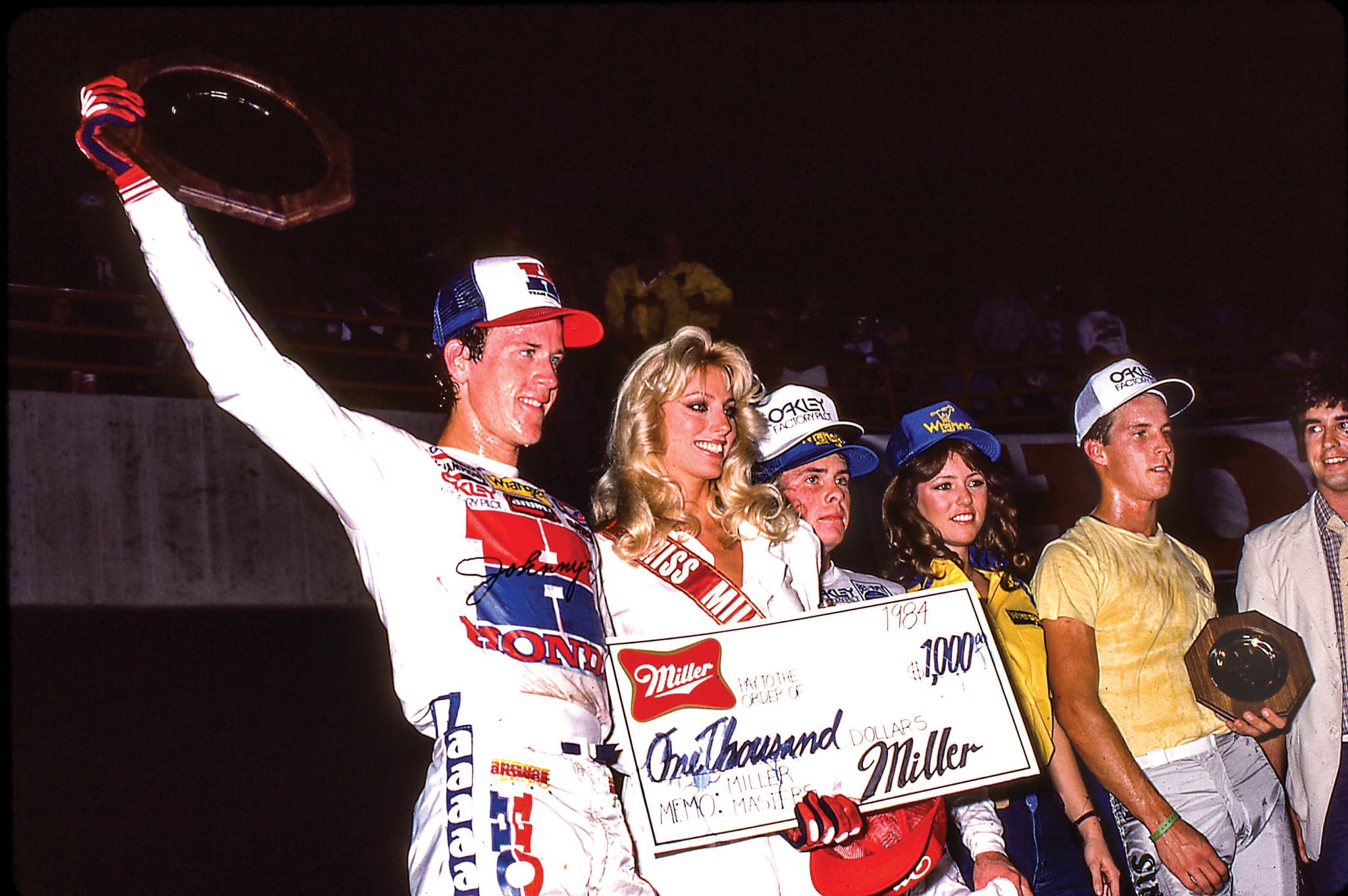
WHEN DID HONDA ENTER THE PICTURE? After the Kawasaki setback, I figured I was going to have to re-sign with Yamaha. It was a Wednesday morning, and I was scheduled to sign my Yamaha contract that day when Honda team manager Roger Decoster called me. “Hey, would you consider riding for us?” he asked.
I said, “I want to ride the bike first.”
He said, “Okay, we’ll be down this afternoon.”
I called Yamaha and made an excuse that “I could not come up today.”
I went to a track out in the hills by Carlsbad and Honda brought out Ronnie’s old works bike. They adjusted the suspension, raised the handlebars and that thing was fast. I said I would sign. I signed with Honda for $125,000. I was supposed to get $225,000 from Yamaha. I told Roger that I wanted to win, so they added in big bonuses. I did the math, and with the salary and the bonus money, I could make much more at Honda.
“YES, I WON A LOT OF RACES, AND I HAD GREAT ADVERSARIES. THE TWO GUYS WHO I CONSIDER MY TOUGHEST RIVALS WERE JEFF WARD AND DAVID BAILEY. IF YOU BEAT THEM ONE WEEK, THEY WOULD COME BACK STRONGER THE NEXT WEEK.”
IS IT TRUE THAT TEAM HONDA WAS CLIQUISH IN 1986? Yes. David Bailey and Johnny O’Mara were great friends, and I, the new guy, was on the outside. David and I would later have a gentlemen’s agreement that we were not going to take each other out. We would ride hard against each other, and maybe even bump each other, but it was never intentional. We had both taken each other out a few times in 1983, but we buried the hatchet and said, “No more of that.”
IN YOUR EARLY PRO DAYS, DID YOU HAVE A BAD BOY REPUTATION? I did not really have a bad boy image, but I was a jerk in 1983. I had a spiked hairdo, and ironically at the same time, the artist from Life’s A Beach came up with ‘The Bad Boy Club.’ I was taking people out. I wanted to be like Bob Hannah and wanted people to fear me, but I was not a mean person. I was just a jerk on the track. When I finally realized that I was slowing myself down to take people out, I knew I needed to just focus on going fast.
I was a Christian, but I would go out dancing and chasing girls. I punched Ronnie Lechien in the face one time, and I had taken a couple of guys out when they started it first, but I did not just hit people all the time.
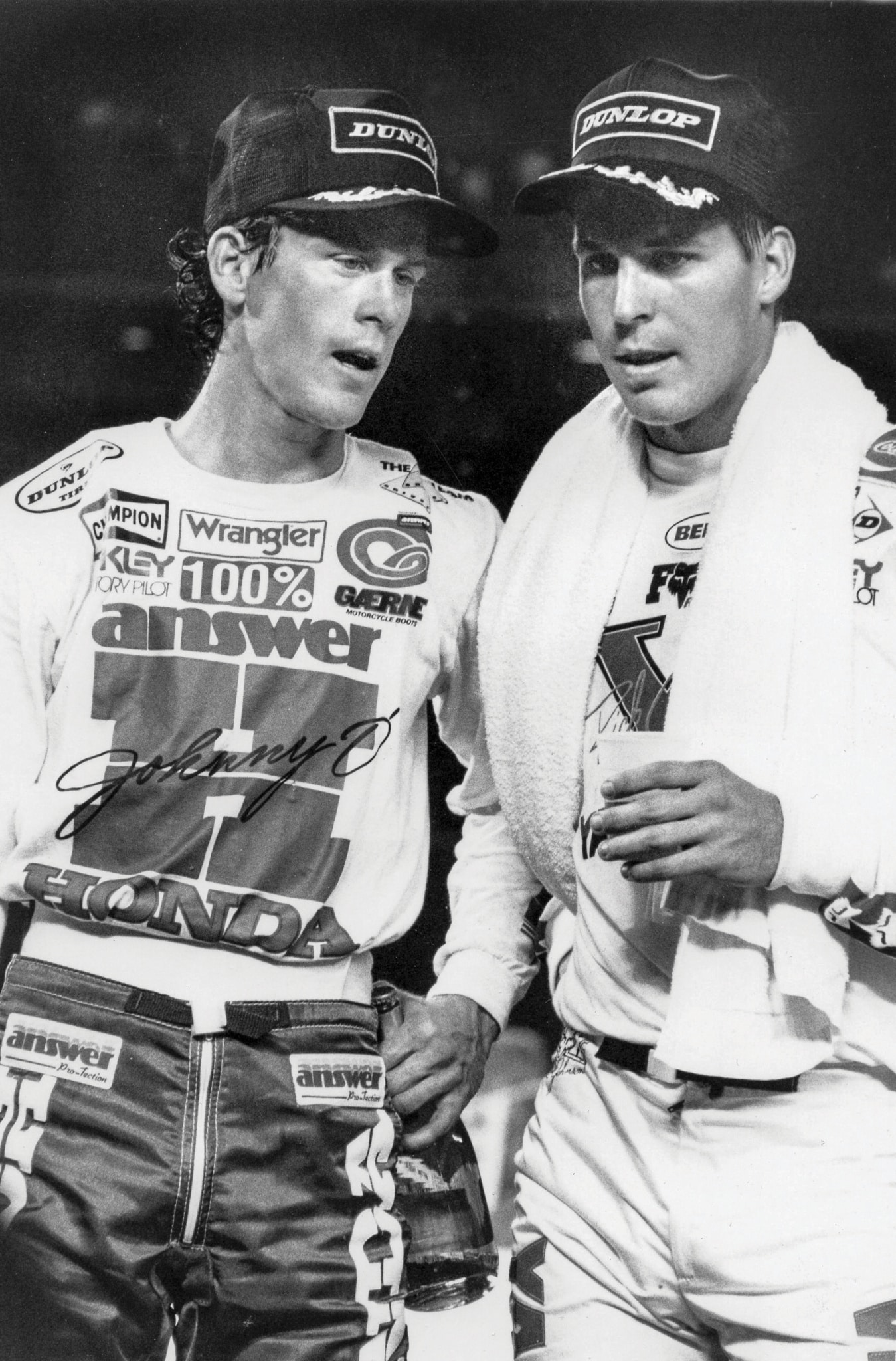
YOU WERE MXA’S “RIDER OF THE YEAR” IN 1986, 1987 AND 1988. HOW DID YOUR POPULARITY AFFECT YOU? To some degree, it was a negative. I won a lot, and some people didn’t like that. I recall seeing T-shirts that said, “Anyone but RJ,” or “RJ” with a line through it. Even some of my friends would say, “We want to see you start at the back and come through the pack.” I understood, but those people didn’t realize how hard I worked to perfect my racing.
YOU WON A LOT, BUT YOU HAD REALLY TOUGH COMPETITION. Yes, I won a lot of races, and I had great adversaries. The two guys who I consider my toughest rivals were Jeff Ward and David Bailey. If you beat them one week, they would come back stronger the next week. They always found a way to fix their flaws and come back.
If I won, I always questioned where I could have been better. Could I have been better on my starts? Could I have been better in the corners? Did I train too much? Did I train too little? It was easy to keep motivated.
“MY LAP TIMES WERE PROBABLY FOUR-SECONDS-A-LAP FASTER, AND I ENDED UP WINNING THE OVERALL.
THAT WIN WAS ALL ROGER DECOSTER, NOT ME. I RODE IT, BUT ROGER GAVE ME THE BIKE THAT I NEEDED.”
TALK ABOUT THE FOX “THINKER” AD WHERE YOU POSED NAKED. Hey, I was wearing boots! That idea came from Pete Fox. We shot it the day after I won the 500 National Championship. I flew to San Francisco, walked into a room, and there was a photo of Rodin’s The Thinker bronze sculpture, along with a big rock. I had to shave my legs, and they used a lot of makeup. That ad was either loved or hated! Many of the Christian folks did not like it, but many women did. Later, Ryan Dungey did something similar.
IN 1989 YOU HAD YOUR BIG WRIST INJURY WITH DANNY STORBECK. Yes, that year started out weird because I hurt my knee at Kenny Roberts’ house. I had a partial tear on my ACL while riding a minibike on a flat track. So, the whole time when Jeff Stanton was training and living at my house, I was just out there coaching him.
I went to the Anaheim Supercross. I had the attitude that if I finished in the top five, I would be happy, but I won. Then, I won both nights in Seattle, followed by wins in San Diego and Miami. Then, I got second to Jeff Stanton in Atlanta. Then we went to Gainesville for the Gatorback National.
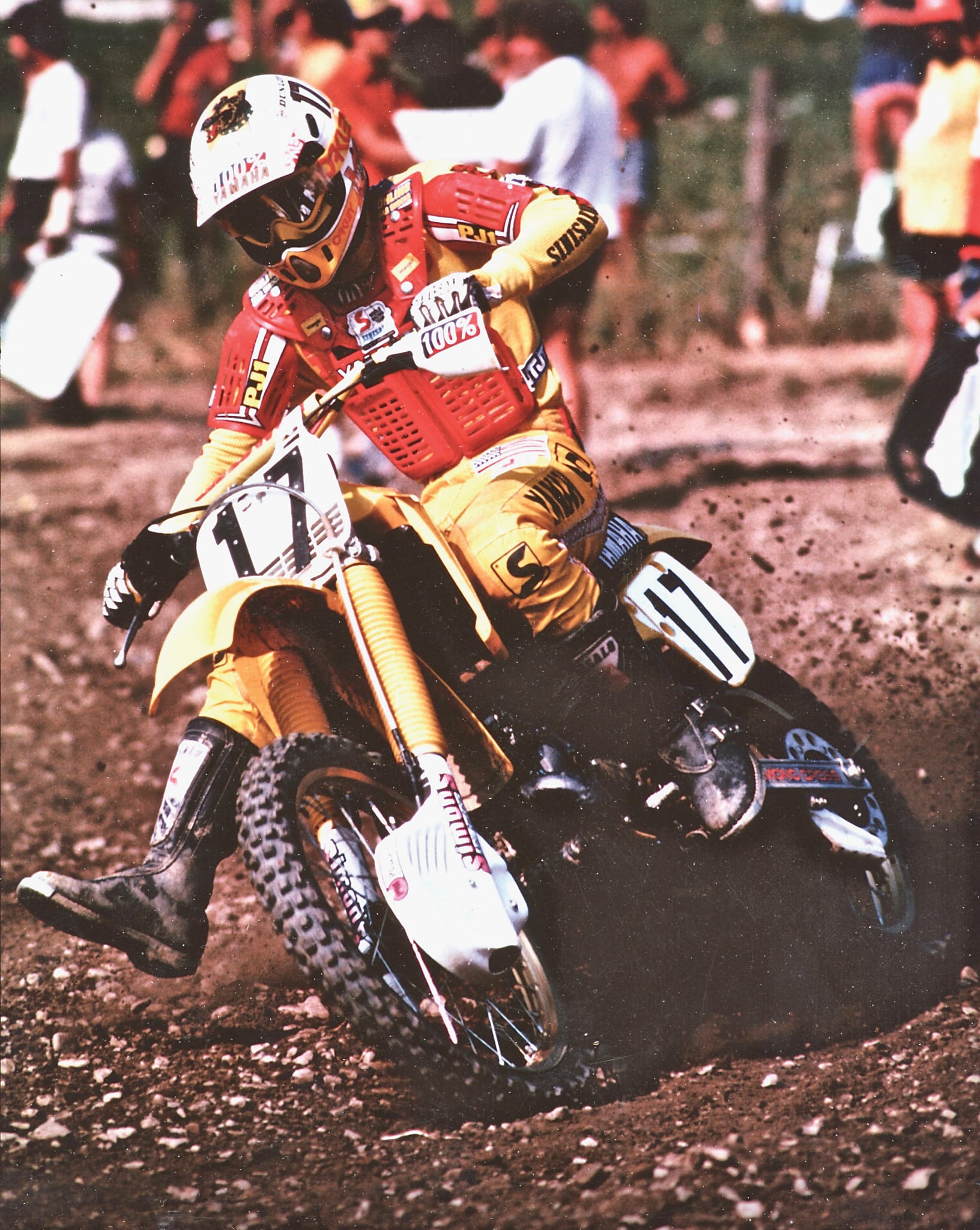
WAS THAT THE ORPHAN NATIONAL THAT WAS IN THE MIDDLE OF THE SUPERCROSS SERIES? Yes. Danny was a factory Yamaha guy. It was in practice, and I was trying to get around him. When I passed him, I scrubbed the jump, and I did not know he was right there. He jumped farther, and his front wheel hit the back of my elbow and shoved my wrist under the throttle. That broke and dislocated my wrist severely. When I got up, I took my goggles off and looked down at my hand. It was completely sideways.
I was screaming at Danny and I tried to hit him in the face with my goggles. We did not talk after that, and later I felt bad. But, we have talked since and have cleared the air. It had to be hard on him. Danny was my friend, and we didn’t talk for a long time. I think he felt it was not his fault, but I felt that regardless of whether it was his fault or not, he should have said, “I feel bad that you got hurt.” That was all I was looking for. I was not looking for, “Hey, it was my fault.”
DANNY STORBECK TOOK A LOT OF CRITICISM FOR “ENDING YOUR CAREER.” Yes, a lot of other people gave him a lot of flak that he didn’t deserve. My wife talked to me about this and said, “You know, Rick, you were everybody’s sweetheart at the time, and he landed on you, and just imagine what people said to him.” I later learned that I was Danny’s little brother’s favorite rider, and even he was mad at Danny.
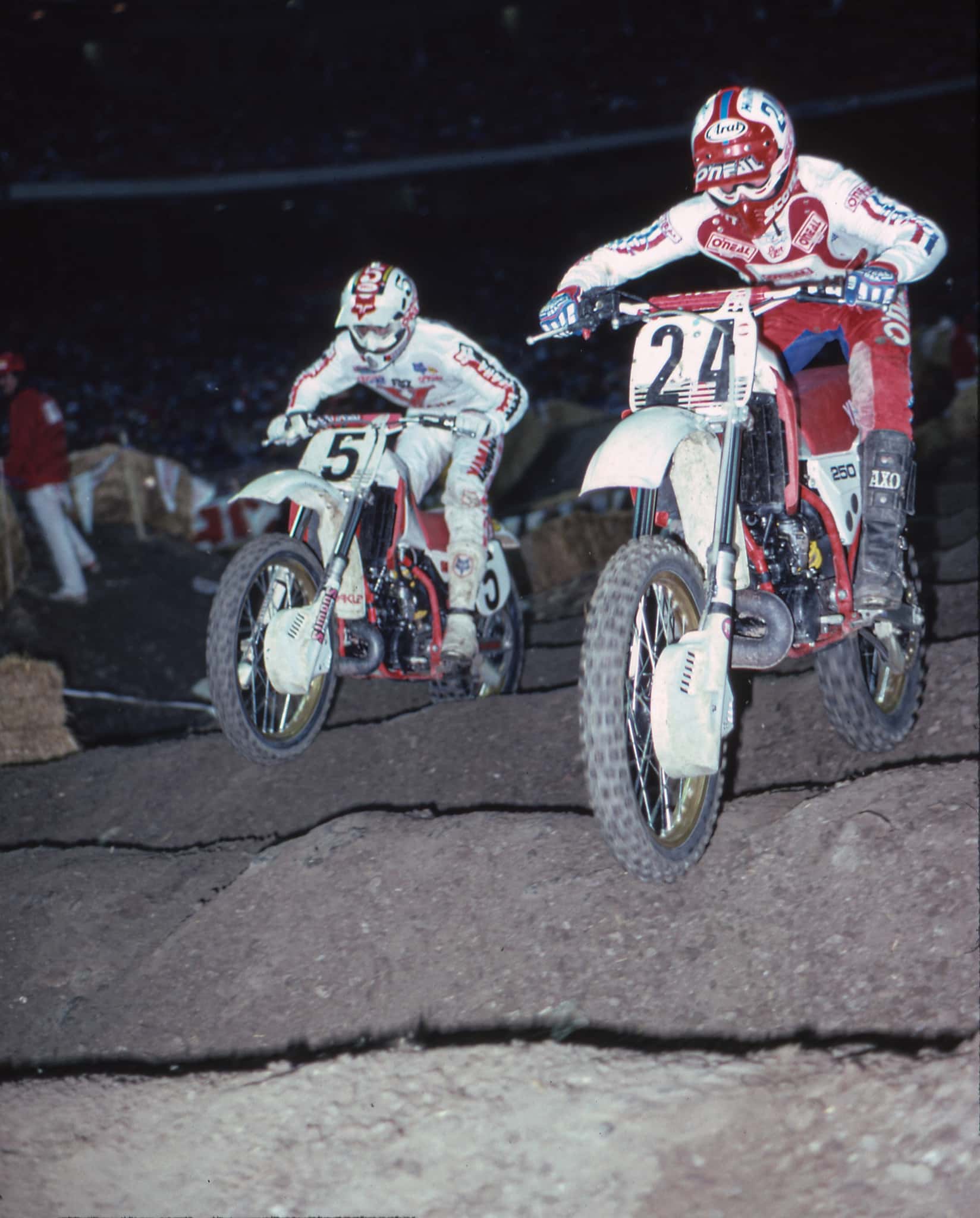
BUT, STORBECK DID NOT “END YOUR CAREER.” YOU WON TWO AMA NATIONALS IN 1990 AND FINISHED FOURTH OVERALL IN THE 500 NATIONAL CHAMPIONSHIP. A month after the crash, nobody called me; I was forgotten. Finally, I came back, and everybody looked at me like I was “half the man that I was.” And, in a way, I was half the man that I was. I was trying to do it one-handed. I did win again, but the injury taught me a lot and allowed me to be grateful, because it made me look at my life outside of being a motorcycle racer.
HOW DIFFICULT WAS IT FOR YOU TO BE DONE RACING AT 26 YEARS OLD? Very difficult, because I had always healed from everything. I had dislocated my hip in 1983. They said that was going to end my career, and I healed perfectly from that. I broke my left wrist in 1981, and I healed perfectly from that. I broke a collarbone in 1983 and healed from that. I blew knees out and healed from that. I was always able to heal, but this time, I was not able to heal.
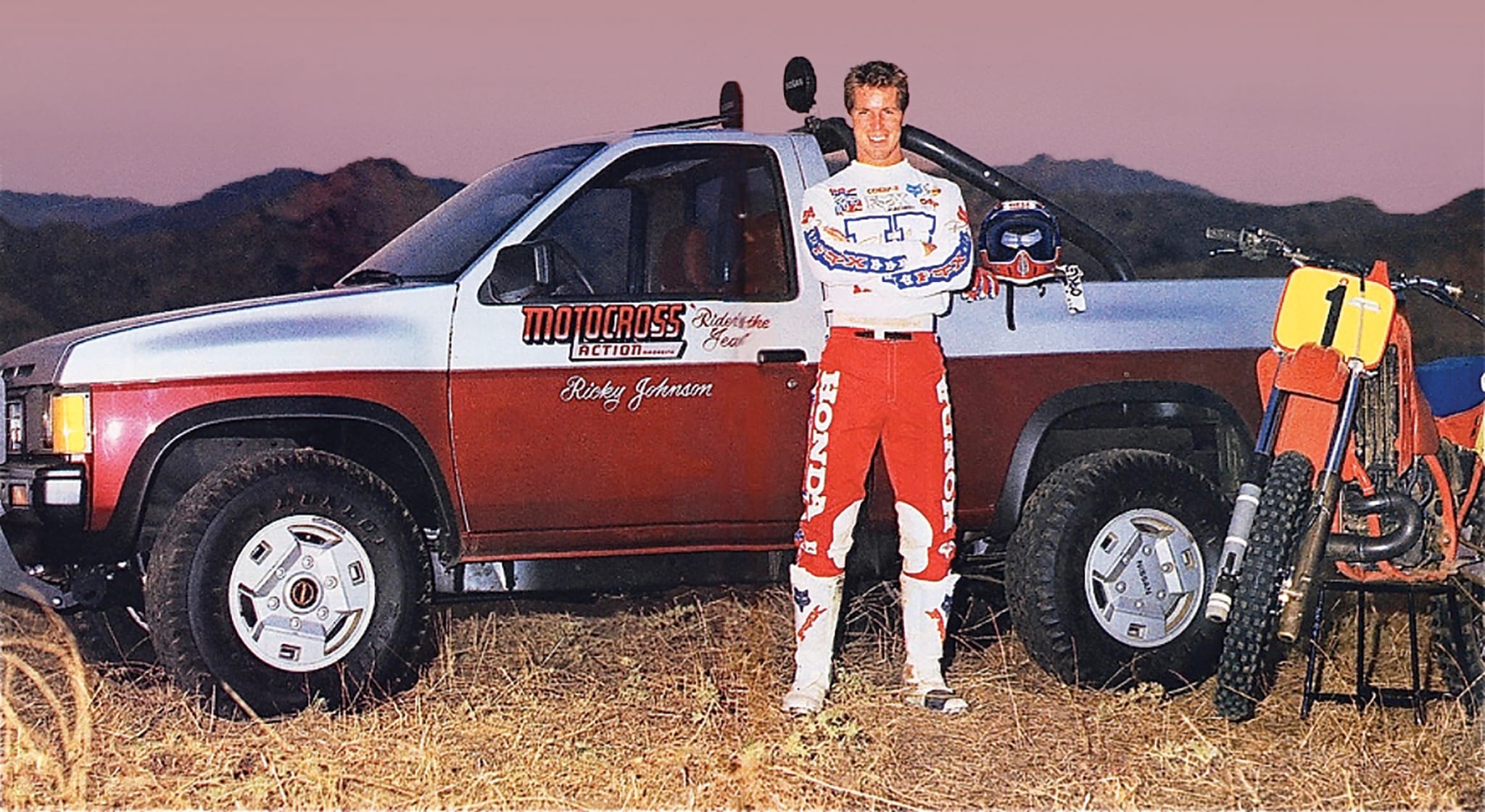
YOU SPENT A LOT OF TIME WITH ROGER DECOSTER. WHAT WAS THAT LIKE? I’ll tell you a couple of stories. In 1986 the first moto at the first round of the 500 Nationals, my setup was wrong. I was struggling with the bike and did not know what to do.
Roger asked, “What can we do?”
I said, “Honestly, Roger, I don’t know. I am lost.”
He said, “Can I put a setup on the bike for you?”
I said, “I don’t care, do whatever you want.” I went out the next moto and won! My lap times were probably four-seconds-a-lap faster, and I ended up winning the overall. That win was all Roger DeCoster, not me. I rode it, but Roger gave me the bike that I needed.
Another thing was when I was getting ready to retire. In 1989 the team went to Japan and Jeff Stanton was the number-one guy while I was trying to make a comeback. A girl came up to us and said to Jeff, “Oh, are you the number-one rider?” Jeff said, “Yes,” and then I said something so stupid. It is embarrassing to say it, but I will. I said, “But I make more money.”
The look on Roger’s face was total disappointment. He did not say anything at that moment, but a couple of minutes later he walked me outside and said, “You have left an unbelievable legacy, and no one would question your record, ever, but you do not need to say things like that. You are so above that. I am disappointed that you would stoop to something like that.”
It embarrassed me, but also made me realize that I didn’t need to do that. I didn’t have anything to prove. Jeff was the number-one rider, and I should have just said, “Yes, he is.”
WHAT’S NEXT FOR RICK JOHNSON? I would like to do something with adventure bike riding, but I don’t have a deal with anybody right now. Yamaha told me no. Honda told me no. Kawasaki told me no. Suzuki told me no. It is looking like I am going to be working with an Italian brand. The timing is right, as I just returned from Italy. It seems like I am forgotten here, but the people in Italy don’t forget you. I’d like to do something like what Jeff Stanton is doing with Triumph in Michigan. Jeff is doing a phenomenal job, and you can quote me on that. He has both schools and tours, and that is what really appeals to me.


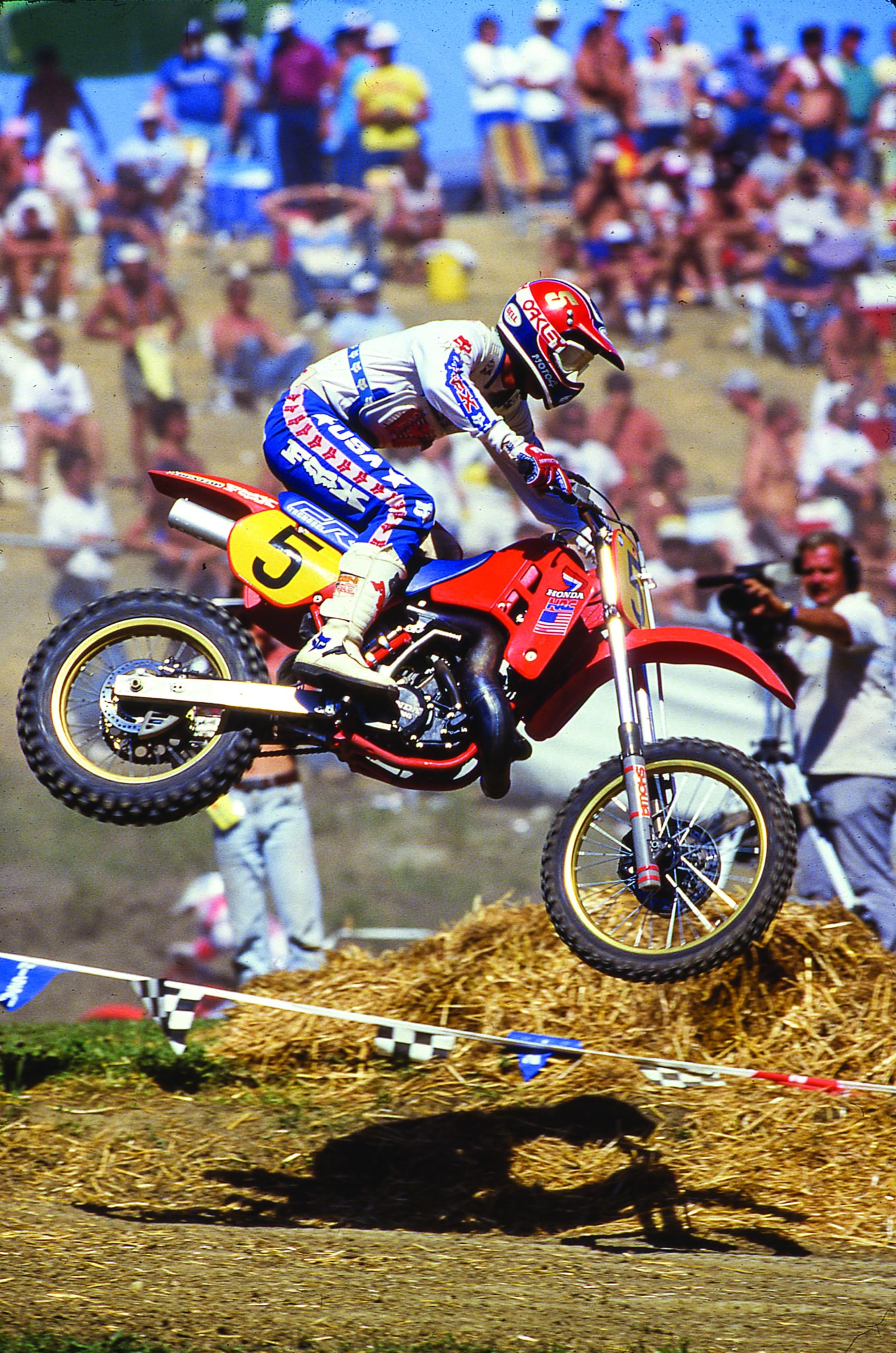




Comments are closed.